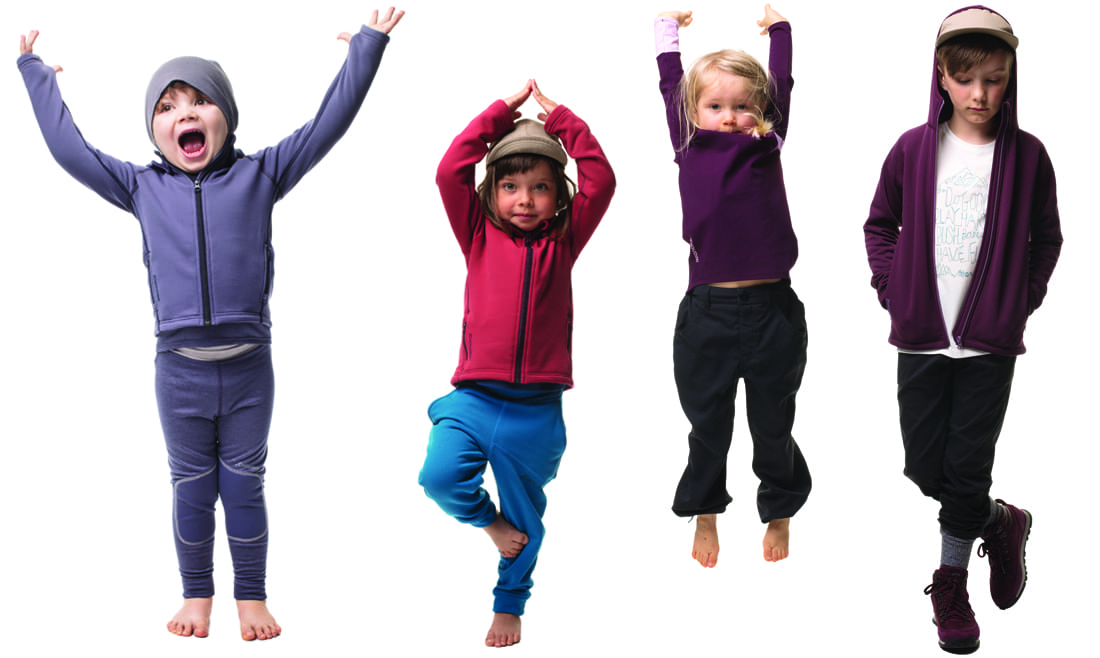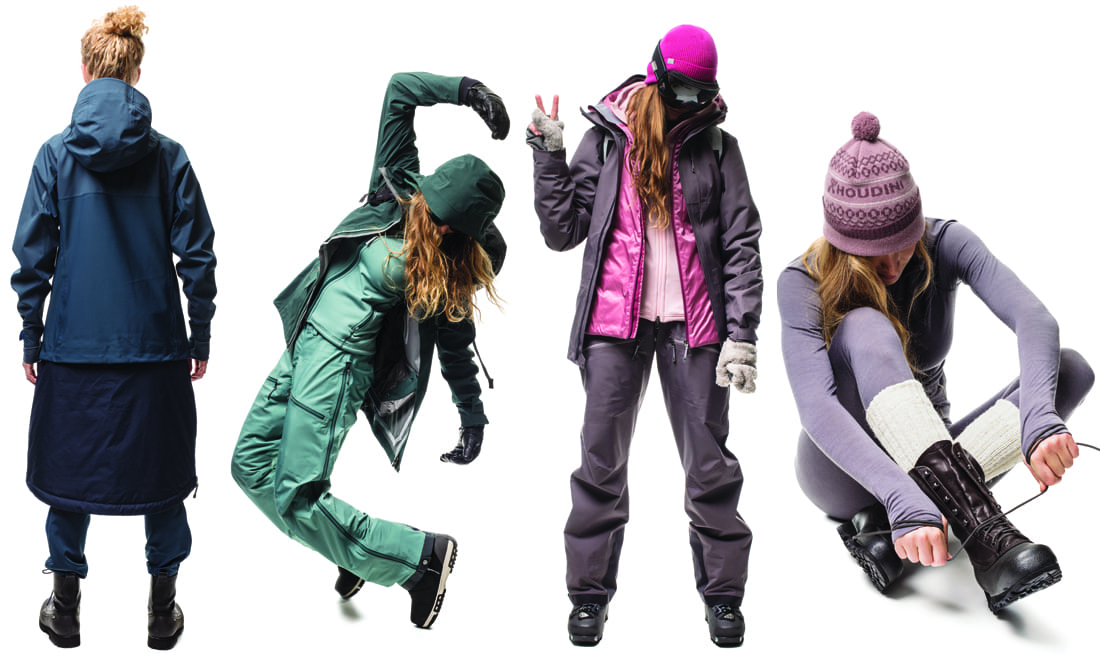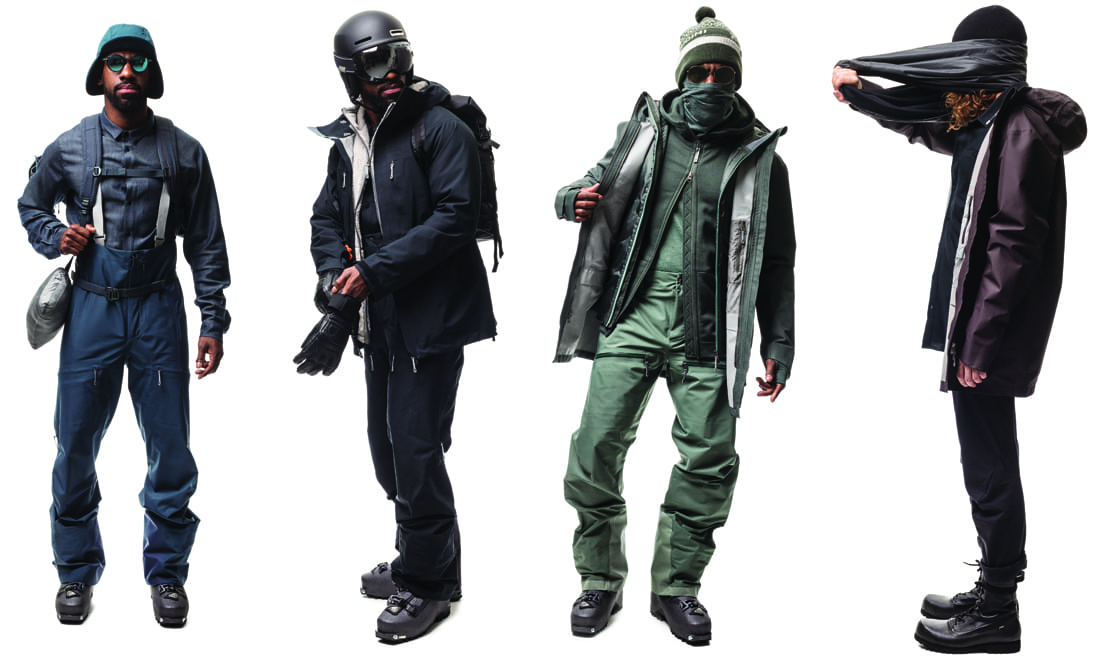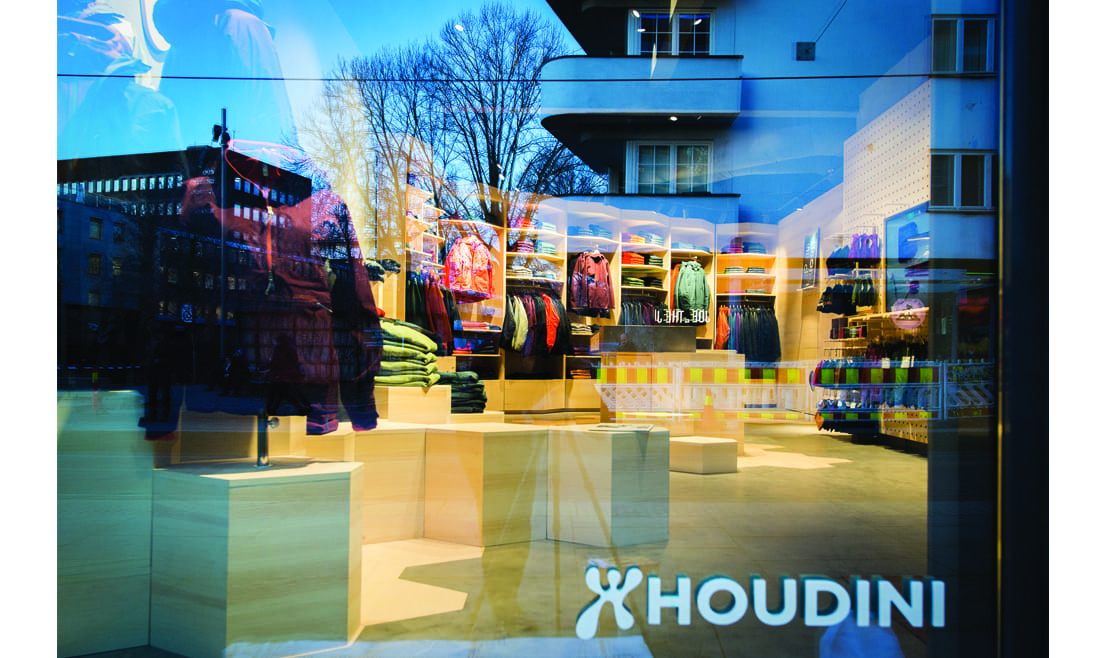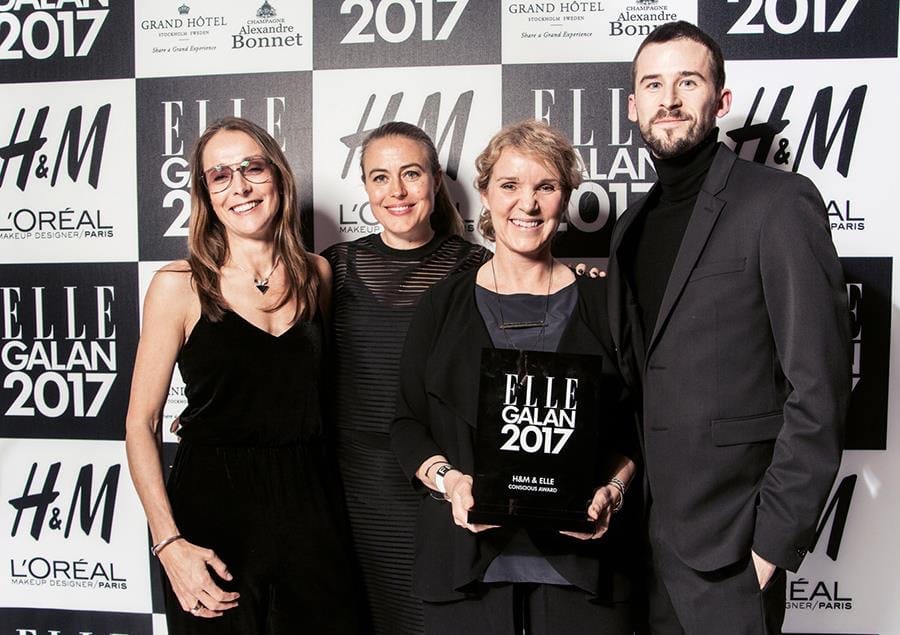Houdini Sportswear is a Swedish company that displays a wide range of products, from underwear to shell garments for men, women, and children. As they declare, their vision is “to help people experience more, perform better and have more fun, without leaving any impact on the environment.” Thus, Houdini designs clothes and accessories bearing in mind a conceptual triangle formed by sustainability, aesthetics, and function--all three elements in perfect balance. “We make products for curious people with big hearts. People who love this planet as much as we do and therefore want to help protect it,” their website declares.
The company was founded in 1993 in Stockholm and is a pioneer in the development of technical performance base-layers made with stretch fleece. Those are products that allow an enormous freedom of movement and pack lighter: two great features when exploring the great outdoors. Lotta Giornofelice discovered the still largely unknown material during a skiing and climbing trip to New Zealand. She started a small-scale production of functional underwear, which quickly gained popularity among climbing circles. In an industry dominated mainly by men, Houdini also gained attention merely for being a modest, irreverent commercial enterprise run by women.
Then, in the early 2000s, Houdini Sportswear began to produce base layers and insulated clothing, introducing attractive functional garments. Indeed, this is not surprising in the current world of trending athleisure, but it was back then. Another milestone was set with the launch of products made from recycled polyester in 2007.
Regarding awards, the label and its members have been recognised for innovative work and consciousness. For example, Houdini Sportswear was awarded the Gold ISPO Award and the Gold Scandinavian Outdoor Award in 2015 for the design of the Corner Jacket.
More recently, the company received the H&M and ELLE Conscious Award in January of 2017. This prize honors actors in the fashion industry who work distinctively with sustainability. Eva Karlsson, CEO stated: “An award like this is important and positive since the fashion industry affects both the lifestyle of us all and the way we consume products, and it is absolutely necessary as the textile industry is one of the worst industries for the environment. It is in our DNA to work for sustainability, we love the nature and want to contribute with the clothes so that more people can experience that feeling, all without stealing resources from the earth. On top of that, everything we do is transparent to help other producing companies to choose the right way without have to do all the investigating work we have already done.”
In other words, Houdini is an undertaking where the interaction between environment, ethics and economics is considered as both obvious and necessary. With a passionate, open and determined mindset, the Houdini team and their collaborators work hard and push the boundaries in order to continuously enable, as they put it, a "maximum experiences, zero impact" lifestyle.
Enlarge

Courtesy of Houdini Sportswear
A philosophy applied to design
The ideas that stand behind Houdini’s products are crystal clear in their written Manifesto. As you go through it, you can see that everything is connected. First of all, there is a deep love for nature while considering it as an “intrinsic value, regardless of human needs”. The production of objects to be used and discarded at an accelerated pace is proposed to be replaced by a circular system that is truly in harmony with the planet. “Every resource we use is borrowed from nature and we will therefore treat it carefully,” reads the text. Therefore, Houdini’s team is on an open battle with overconsumption. Their weapons are the development and implementation of sustainable technology; the collaboration with others and the sharing of knowledge; the questioning of their own practices in order to evolve; and the encouragement of free thinking and individuality.
When it comes to sustainability work, it begins at the planning stage. A product idea or request is thoroughly analysed: Does it really deserve to exist? It should fulfill an actual need and be used for many people for several activities; Will it last long enough? They mean to produce garments that can be passed onto the next generation. These are only a few of the aspects they take into consideration before even start the new creation. In their own words: “The goal is not to be the next new thing. It is to never become old.”
Versatility, timelessness and sustainability lead the process of development. The first one is related to Houdini’s concept of “wearable multi-tools”: avoiding a specific product for each activity and letting you carry minimal packing around and go further. “The less clothes we buy, the less of an impact we have on the environment.” The second one is approached by creating esthetically contemporary clothes that feel timeless and personal. For instance, not choosing colours just because they are trendy. Besides, the brand focuses on quality, style and function. This translates into making their garments comfortable for all of our senses, which protect you in any weather during several activities and, on top of that, you can find them attractive. All of this is meant for outdoor adventures as well as an active urban life.
Regarding the materials used to create garments, there is another thorough examination and work. “A garment's total environmental footprint is largely traceable to the choice of material. We invest a lot of time and effort into our choice of material. If we cannot find materials that live up to our high demands on comfort, function and the environment, we will develop a new material in collaboration with our suppliers. We never apply for patents for our new materials since we believe that the more companies using functional and environmental materials, the better.”
One of Houdini’s main beliefs is the redefinition of consumption. The design of functional garments is also thought to lack unnecessary details to put no obstacles in the way of any required repair. In fact, the brand has a repairing service. If you cannot visit them, they recommend getting in touch with a local tailor. And if you need extra parts, they can even send them to your tailor. Apart from that, they present a really specific guide of how to take care of your clothes and the impact of washing processes, so that you make them your companion for life. And in addition to this, shell garments are rented and second-hand products are offered for sale in their stores in Sweden and in Oslo. “By selling goods second-hand, we are offering more customers the possibility of using our products while also extending the life of our products.” The rental option also responds to the battle against over consumption, “focusing on the function of and access to a product, not necessarily ownership.” Furthermore, it allows more informed purchases, by giving the opportunity to test products before deciding.
Enlarge

Courtesy of Houdini Sportswear
Regarding their lines of products, the holistic approach from the designers favours a better performance of the products when used together, as a layer-on--layer. And said categories are:
* Underwear that keeps you dry and maintains the body temperature.
* Base, to help you stay dry, warm or cool (depending on the weather and activity), comfortable and ensuring the mobility.
* Insulation, to control the body temperature and release moisture and excess heat.
* Shell, the garment that protects and allows breathability without overheating.
* Insulated shell, a special layer meant to enable extra insulation and keep you warm in any weather conditions.
* Slipstream, made of materials that are water and wind resistant and have maximum breathability. It is created for high-pulse activities.
* Liquid, the lightest and coolest layer. It dries rapidly, is soft and pliable. This product was developed for activities on land or in water, in areas with hotter climate.
* Metropolis, the clothing line for everyday life, urban or for outdoor activities.
* Accessories to complete the outfit in high performances or quiet days.
Besides, in 2016 Made to Move line was launched. It implied a new way of designing and cutting garments originating in the body’s natural movement, in contrast with the flat surface which is the traditional support of the process. Houdini designed this garments directly on a moving body from one single piece of fabric. In consequence, the user has more freedom when moving and seams are avoided in friction areas.
As you can see, this is serious business. Each piece of clothing is thought to the smallest detail. And the production of such technically advanced garments requires craftsmanship and technology. So, there is a collaboration between scientists, artists, designers and engineers; all of them involved in the process of not only making them but thinking how to dispose of them.
Enlarge

Courtesy of Houdini Sportswear
Inherent sustainability
As previously mentioned, Houdini’s team views sustainability as an integral part of everything it does, as a prerequisite of a good business. Nature is the most important resource and it is essential to take care of our planet.
In this view, the Swedish brand claims that most of its products are made in a sustainable way, either from recycled fibres or renewable raw materials. And the website clarifies: “When we use the term ‘recycled’, the product must be made from at least 50% recycled fiber. Often, it is 100%. When the recycled content is below 50%, we simply won’t call it recycled.”
Moreover, most of their fabrics are produced following Bluesign production methods in certified facilities. For those who aren’t acquainted with it, Bluesign system leads the sustainable textile manufacturing: it considers production processes as a whole, eliminating harmful substances from the very beginning of the cycle. It also sets and controls standards for every element involved, ensuring that the final product meets stricts requirements.
According to Houdini, their path is for their products to reach a circular lifecycle, where they can be recycled in a closed loop system. As declared, 91% of their line is either made from recycled, recyclable, renewable, biodegradable or Bluesigned fabrics. Indeed, their website includes a full report of the sustainability status of each product.
As you can see, Houdini takes recycling seriously: “It is our responsibility to ensure that our clothes do not go into the trash, but rather can be reborn as new garments.” They feel the responsibility as a brand for the clothes that are being thrown away. Their offering of repairing services, second-hand, rental garments and recycling programme follow the policy of Repair-Reuse-Clean-Recycle. Customers are encouraged to return their old products: depending on its conditions, they can be sold as second-hand, donated to charity or recycled. There are boxes at Houdini’s stores and retailers in order to collect old garments from end consumers. “If you give us your worn-out clothes, we will make sure that they can be transformed into new, wonderful functional garments that are ready for new adventures.”
Transparency is another important feature of this brand. There is an enormous amount of detailed information available in Houdini’s website. There you can find out everything about the lines of products and the materials used, as well as a timeline of sustainable milestones achieved.
Furthermore, there is section on suppliers and production with lists of them. “We have always been extremely careful when selecting our producers and our method of production. We have made the conscious decision to only have a few suppliers and producers. This way we can have control and be confident that they are working in a manner that feels right for us. (…) All Houdini products are currently manufactured in Europe. This means that we can easily monitor whether or not our producers are in compliance with our high demands on sustainability and human rights.”
An extensive article on their website explains how they work with wool. They first started producing wool garments in 2011. Wool is biodegradable and therefore, circular. However, it is commonly blended with synthetic fibres to enhance durability and elasticity or to lower costs. In contrast, Houdini uses silk and other natural materials, such as lyocell-based Tencel, made from wood pulp. Another usual problem is that some thick wool can feel itchy and heavy and the founded solution was to only use mulesing-free merino wool. Finally, the first wool products with full traceability were launched in 2016, “which we are very proud of and will continue to develop so our customers can know exactly where the sheep live that keep you warm and dry throughout your adventures.”
Apart from all of this, the label has joined Albaeco (an independent non-profit organisation) to initiate the first ever corporate Planetary Boundaries Assessment. This programme provides a holistic way of analysing the state of the planet. Also, it identifies nine global environmental boundaries we should remain within to avoid unacceptable global environmental change. Particularly, the collaboration aims to analyse Houdini’s work from a Planetary Boundaries perspective. Therefore, it will provide the company with a deeper understanding of its impact. “A more holistic view on the environment can help businesses see their impact more clearly and move towards not only reducing their negative impact but working to strengthen important ecosystem services,” said Fredrik Moberg, co-director of Albaeco.
Enlarge
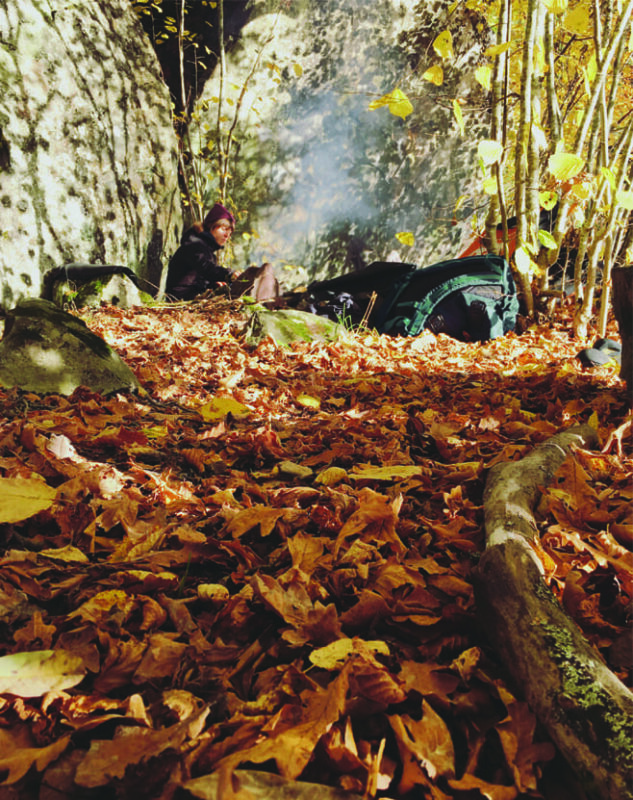
Courtesy of Houdini Sportswear
Garments so clean that you can eat them
On 23rd of April of 2017 took place The Houdini Menu, an event labelled as the world’s first vegetarian dining experience grown from old sportswear. Surely, you must be wondering what this means. The concept is simple: clothes from the Activist, Airborn and Wooler series can be composted when they are worn out. The fabric used in their production is created from 100% renewable, organic, natural material and therefore they are biologically degradable.
So, garments were composted, vegetables were grown in the naturally fertilised soil and then used to create a fine-dining menu designed by chef Sebastian Thureson. Houdini invited the brand’s users to enjoy the dishes as guests. “By growing vegetables from worn out base layers, we want to showcase how beautiful it can be when we manage to close the loop. Food for both thought and taste buds, you could say,” commented Eva Karlsson.
The clothes were put in the compost in November 2016 and turned into nutritious soil after six months. The compost process was carried out by Gunnar Eriksson, an expert with more than 20 years of experience in the field. Vegetables and herbs have then grown from the soil. Chef Thureson, who used them into crafting the menu, declared: “Houdini has a certain honesty to them and the way they make their clothes. When I created the menu for the dinner I wanted to capture the fact that it is created from old clothes, but also give that honest feeling to every dish. In the end, that resonates well with how I want to cook in my job.” Houdini Sportswear gave away eight sought-after seats through their social channels.
“When we started working on this project we were set to capture the simplicity in it. ‘Eating old clothes’ was a cool way to show a solution or a step in the right direction, to a bigger problem. But the more we got to know all the experts involved, we realized how complex every field is; just creating the fabric took Houdini over five years and the compost has been reused for about 20 years. So, this wasn’t a simple project at all and the challenge rather became to show how much work, time and effort that lies behind ‘eating old clothes’, in a simple way,” said Daniel Blomberg and Carl Larsson, producers of the video project. You can watch the marvellous experience here.
Enlarge
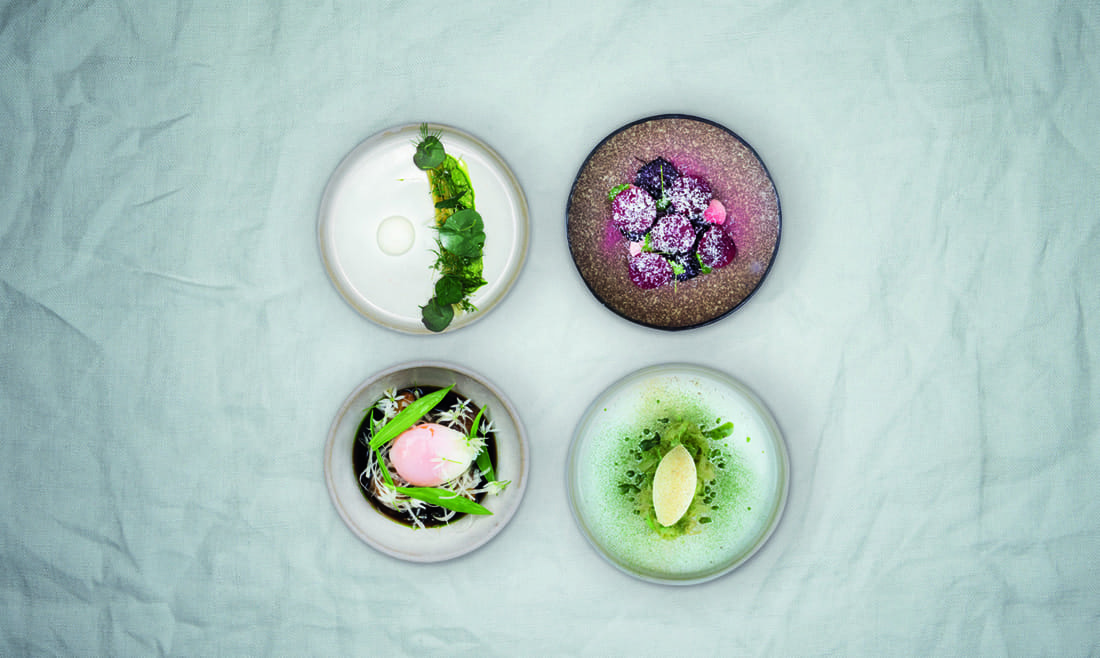
Courtesy of Houdini Sportswear
Taking everything into consideration, Houdini Sportswear is definitely a company committed to keeping the great outdoors great and providing the sustainable gear to take you there. It can also be defined as ambitious, entrepreneurially driven, innovative and transparent label. As they say in their own words: “So what is the next revolution? We do not know yet. We are in the middle of an environmental revolution, but we promise to continue to redefine borders. Sitting still is so boring.”
Tags
Accessories / circular lifecycle / clothing / Conscious / Design / Houdini Sportswear / Sustainability / Sweden
Accessories / circular lifecycle / clothing / Conscious / Design / Houdini Sportswear / Sustainability / Sweden

